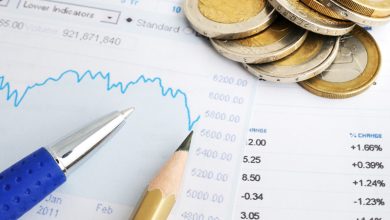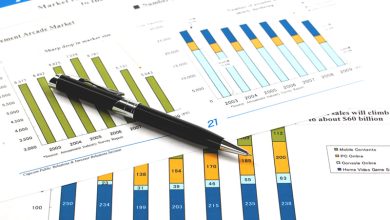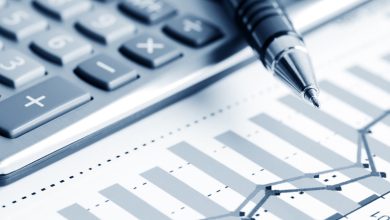
Fed’s Powell Announces ‘Time Has Come’ to Cut Rates in Policy Shift, Reports Reuters
By Howard Schneider and Ann Saphir
JACKSON HOLE, Wyoming – Federal Reserve Chair Jerome Powell on Friday signaled that the central bank is prepared to initiate interest rate cuts soon, emphasizing that additional cooling in the job market would be undesirable. He expressed confidence that inflation is moving closer to the Fed’s 2% target.
"The time has come for policy to adjust," Powell stated in a highly anticipated speech at the Kansas City Fed’s annual economic conference in Jackson Hole. "The direction of travel is clear, and the timing and pace of rate cuts will depend on incoming data, the evolving outlook, and the balance of risks."
This notable shift from focusing on inflation to prioritizing employment comes at a pivotal moment as the U.S. presidential election approaches.
Powell indicated his growing confidence that inflation is on a sustainable downward trajectory toward the 2% target, after having peaked at around 7% during the COVID-19 pandemic, and suggested that upside risks have decreased.
He acknowledged a clear slowdown in the labor market, noting that "the downside risks to employment have increased." While the recent uptick in the unemployment rate to 4.3% is primarily driven by slower hiring rather than significant layoffs, Powell indicated that the Fed would not tolerate further declines in labor market conditions.
"We do not seek or welcome further cooling in labor market conditions," he noted. "We will do everything we can to support a strong labor market as we make further progress toward price stability."
Analysts and financial markets widely anticipate that the Fed will implement its first rate cut during its upcoming policy meeting on September 17-18. This expectation was reinforced by a summary from the July meeting, which indicated that a significant majority of policymakers agreed that policy easing is likely to begin next month.
Most forecasts suggest the Fed will initiate this easing with a quarter-percentage-point cut, which is the typical adjustment. However, Powell’s emphasis on job market protection raises the possibility of a more substantial cut, especially if the U.S. labor report for August, set to be released on September 6, indicates further deterioration in what has been deemed a robust job market.
With the current policy rate ranging from 5.25% to 5.50%, Powell mentioned that the Fed has "ample room" to lower borrowing costs to support the economy. Following his remarks, traders began to factor in a greater than one-in-three chance of starting the easing cycle with a half-percentage-point cut, and there is widespread expectation of at least one larger rate reduction before the year ends.
"Chair Powell’s speech made it clear that a series of rate cuts are likely, and some could be as large as 50 basis points," stated Omair Sharif, president of Inflation Insights. "While some Fed officials may prefer 25-basis-point increments, the Chair has kept options open, indicating they would consider a 50 basis-point cut if deemed necessary."
Market predictions suggest that the Fed’s policy rate might drop to the 3.00%-3.25% range by the end of 2025, representing a decline of more than 2 percentage points from current levels.
The implications of Powell’s comments extend beyond U.S. borders, influencing other central banks as well. Following his address, U.S. stock markets surged, with the benchmark index gaining about 1% and nearing record highs. U.S. Treasury yields fell, and the dollar weakened against a range of other currencies.
‘SOFT LANDING’
Chicago Fed Bank President Austan Goolsbee has consistently backed the notion of a rate cut, reiterating on Friday that current policy is overly restrictive, particularly amidst warning signs in the labor market. Other policymakers, including Atlanta Fed President Raphael Bostic, who had previously shown hesitation regarding rate cuts, echoed support for the impending policy easing.
In his speech, Powell came close to declaring victory over the inflation surge that disrupted the economy at the pandemic’s onset. The aggressive increase in prices prompted the Fed to raise its benchmark rate from near-zero levels to the current range, the highest seen in 25 years. This rate has been maintained for over a year, despite frequent recession predictions, as inflation declined and economic growth persisted—an outcome indicative of a "soft landing," with rate cuts now on the horizon.
"While the task is not complete, we have made significant progress" towards achieving price stability, Powell remarked. The Fed defines price stability as maintaining 2% inflation, measured by the personal consumption expenditures price index, which is currently running at an annual rate of 2.5%.
"With an appropriate reduction in policy restraint, there is good reason to believe the economy can return to 2% inflation while upholding a strong labor market," he added.
Powell addressed a gathering of central bankers and economists at the Jackson Lake Lodge in Wyoming’s Grand Teton National Park, a platform known for shaping perspectives on monetary policy and economic outlooks.
Fed officials are expected to present updated economic projections at their meeting next month, including insights into how they anticipate the benchmark policy rate will evolve moving forward.
 GOOGL
GOOGL  META
META 


